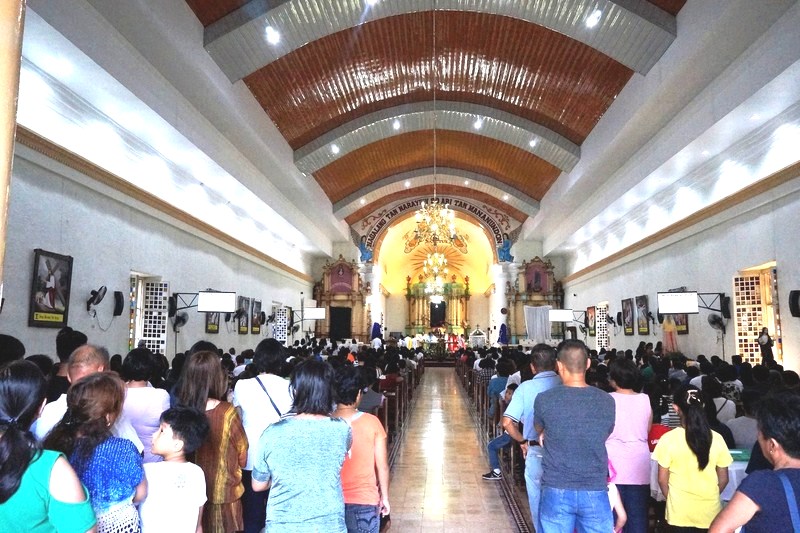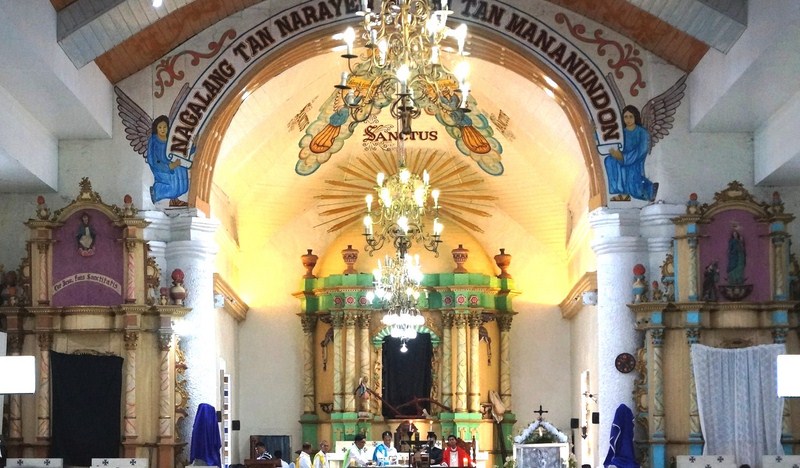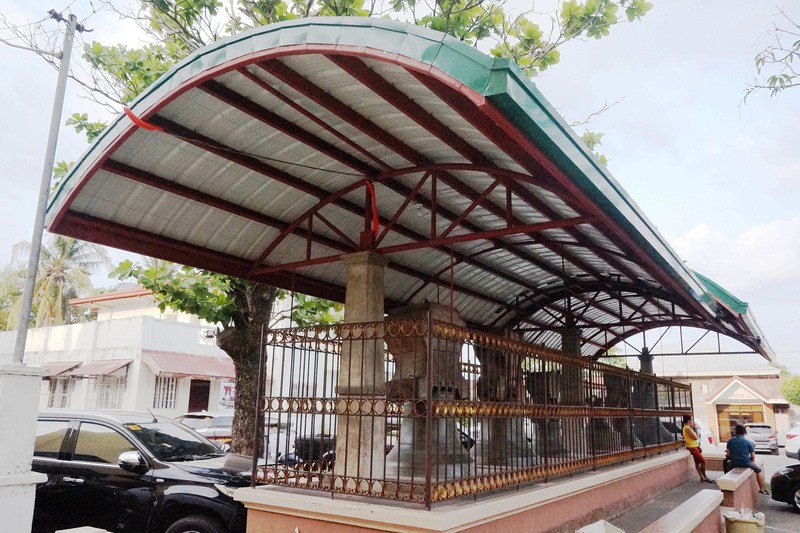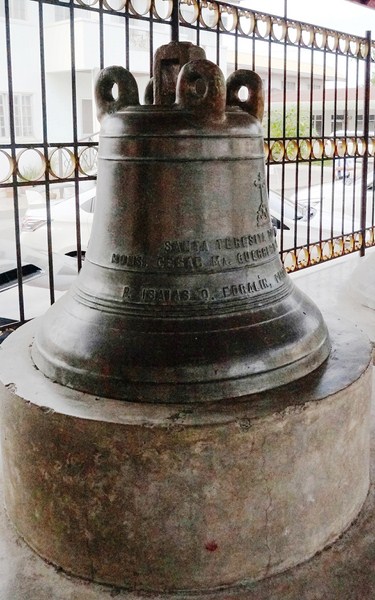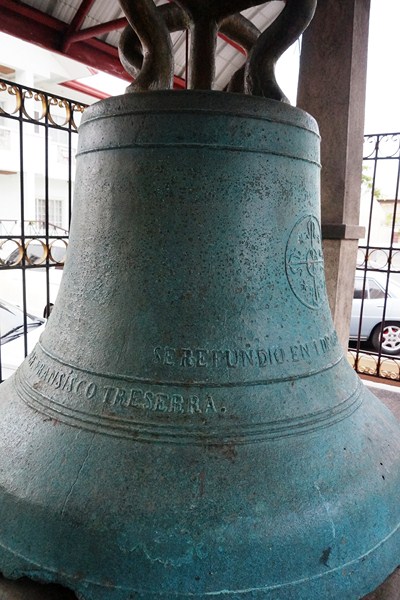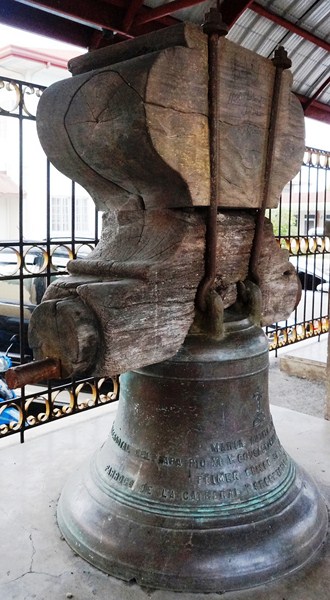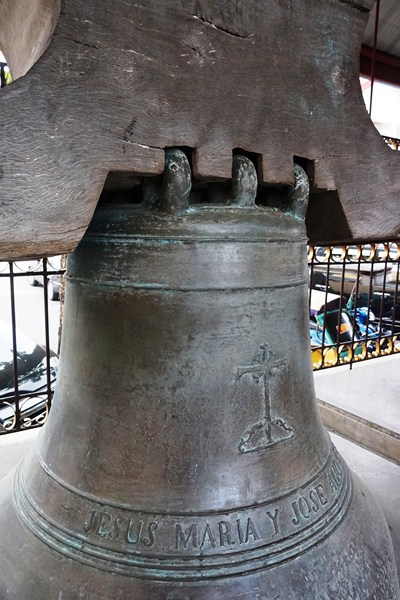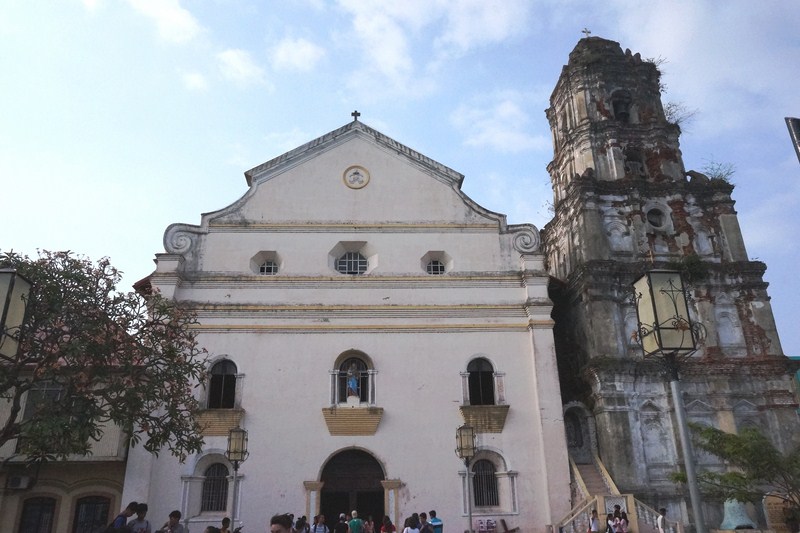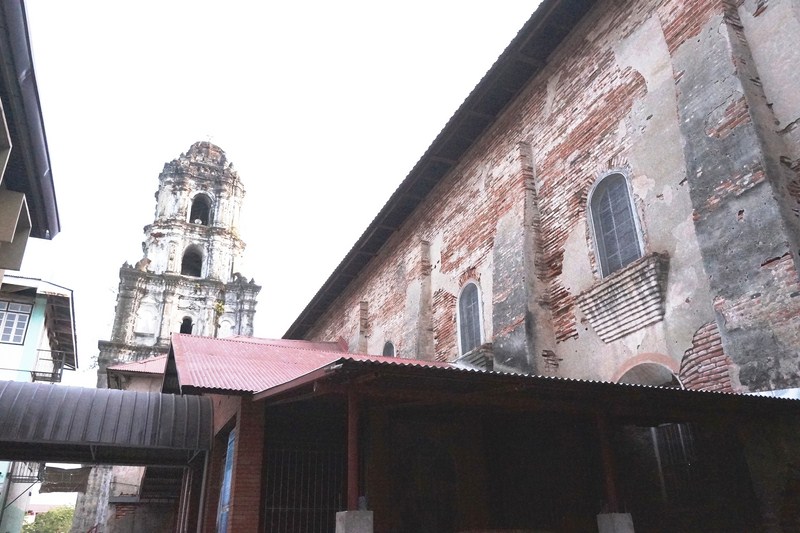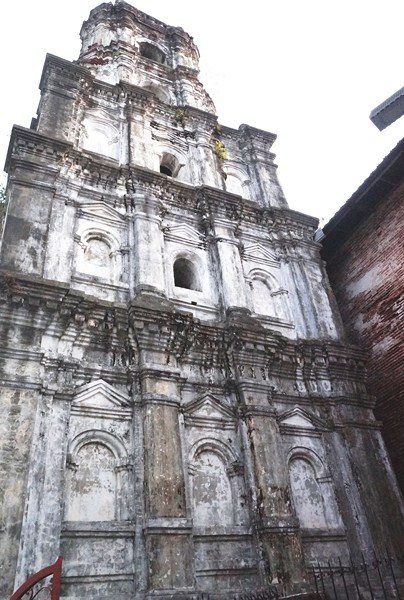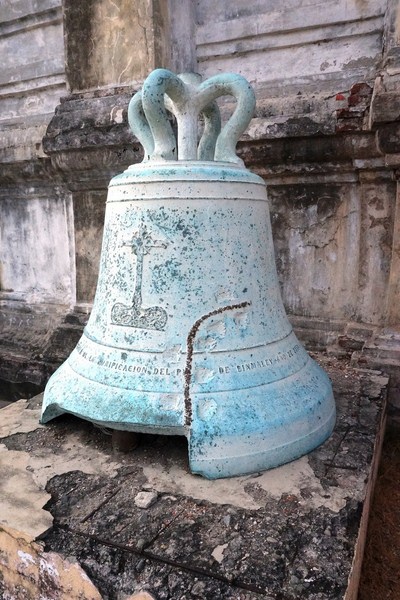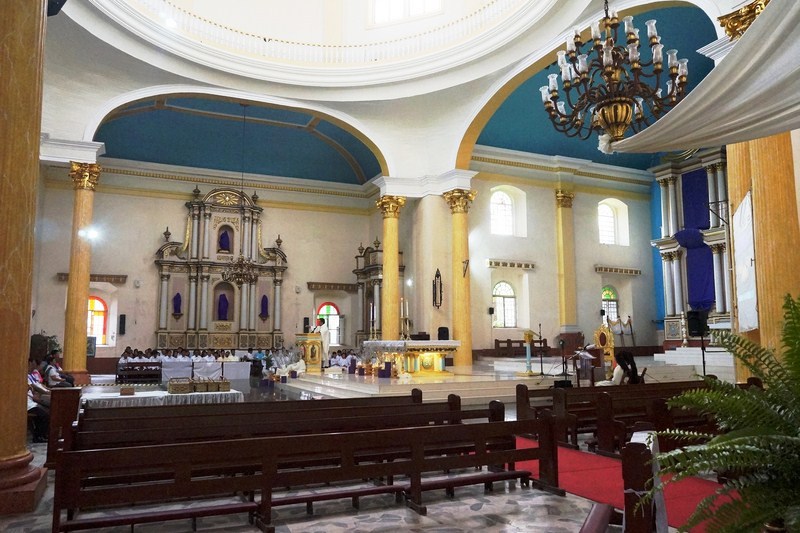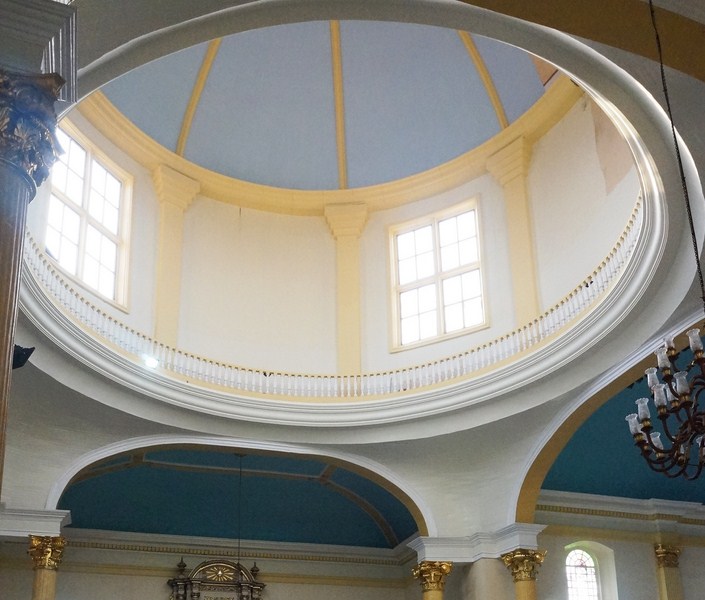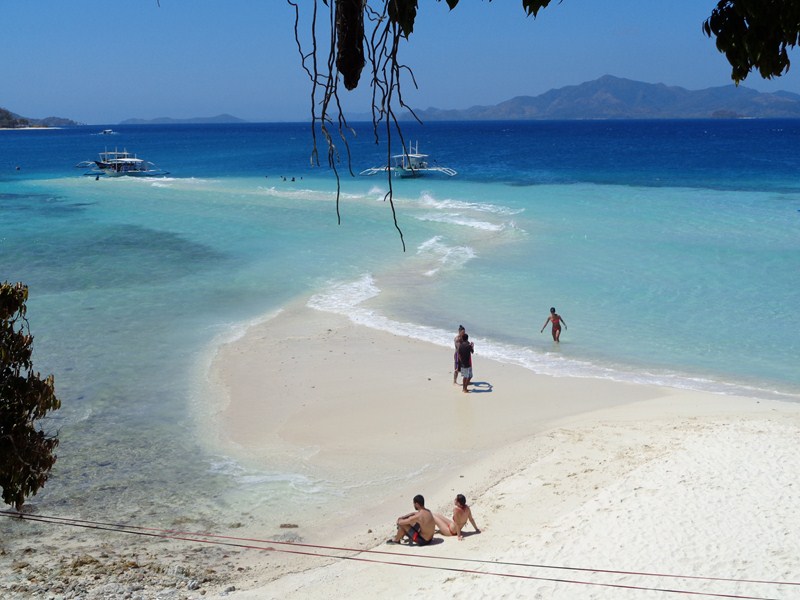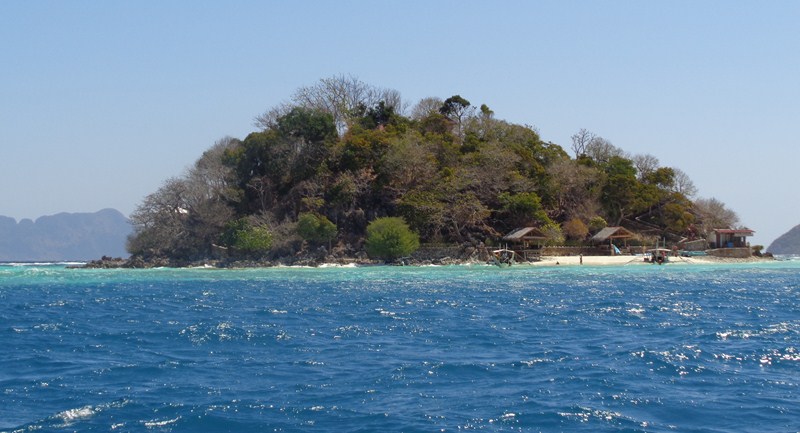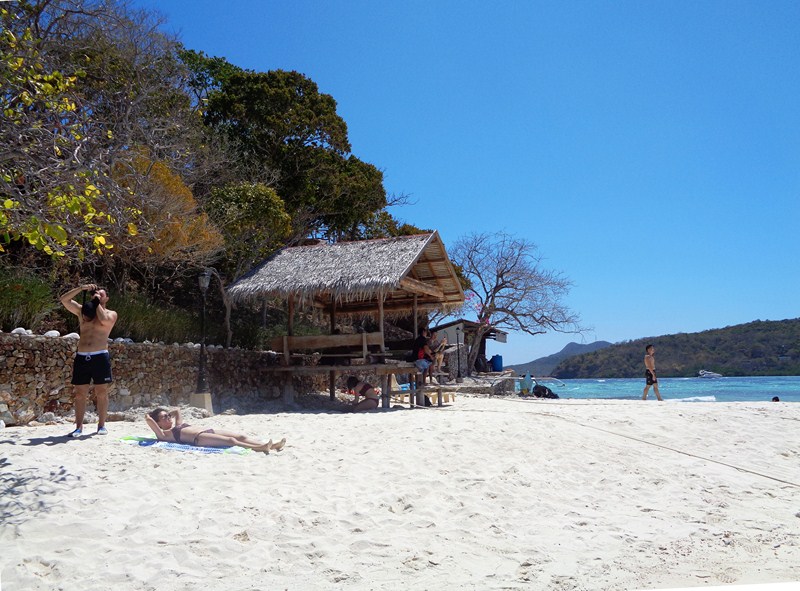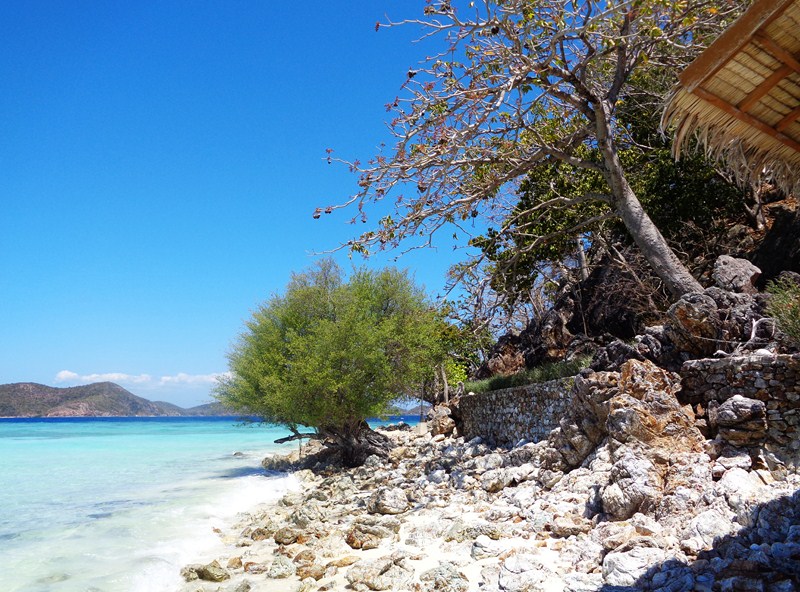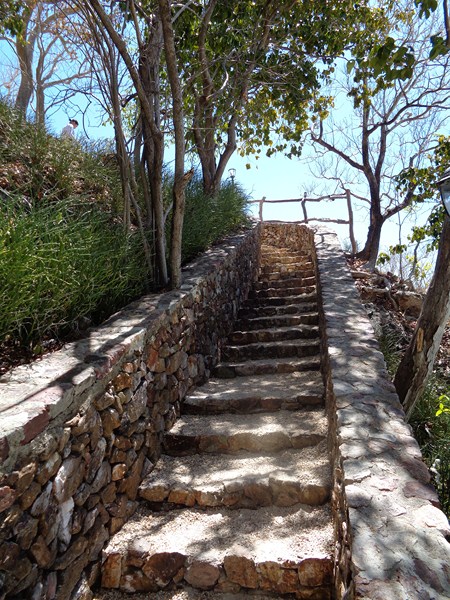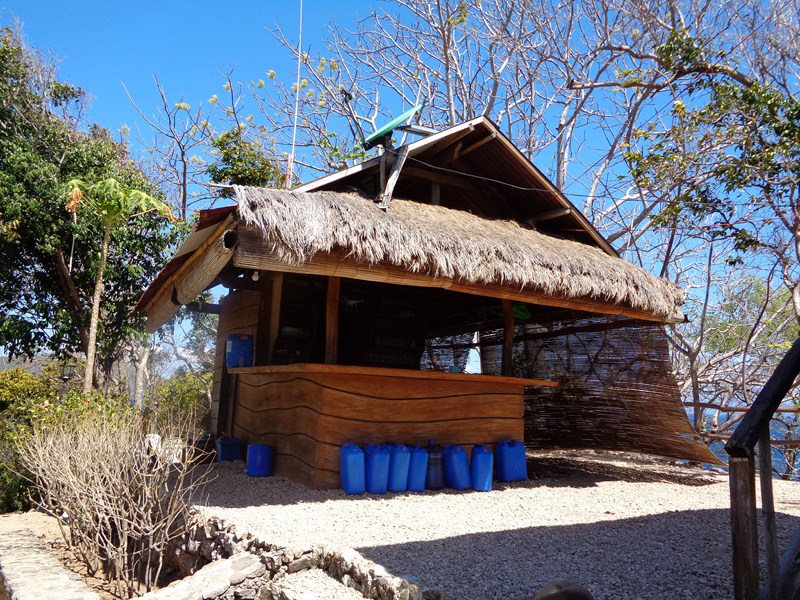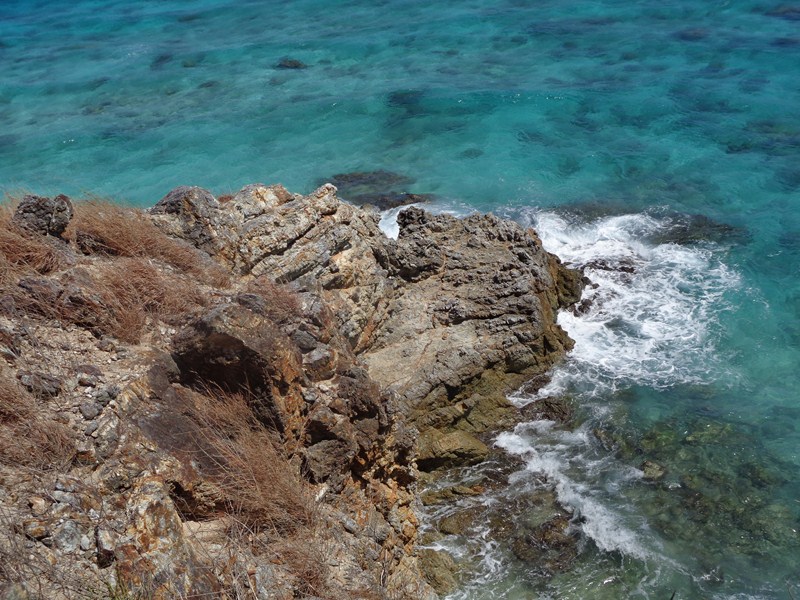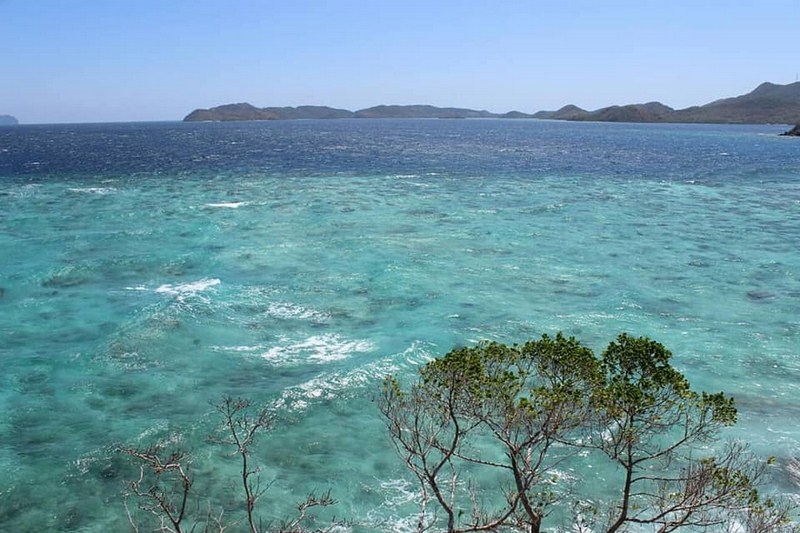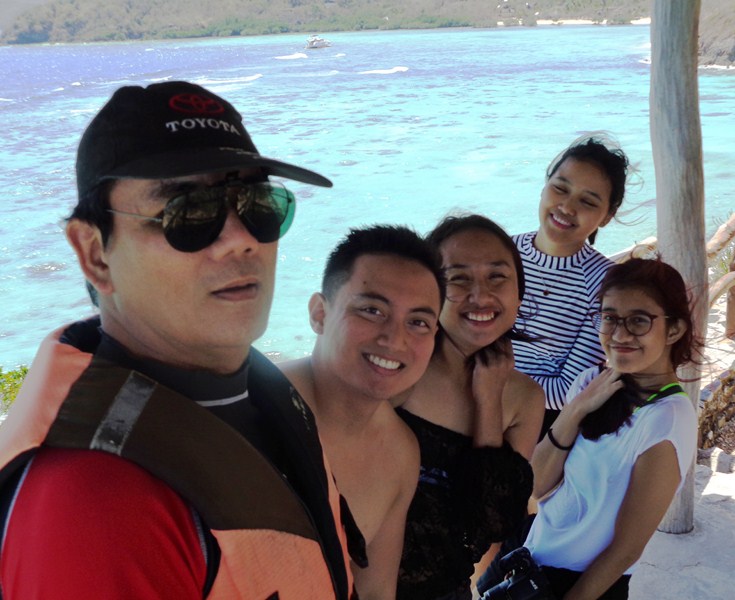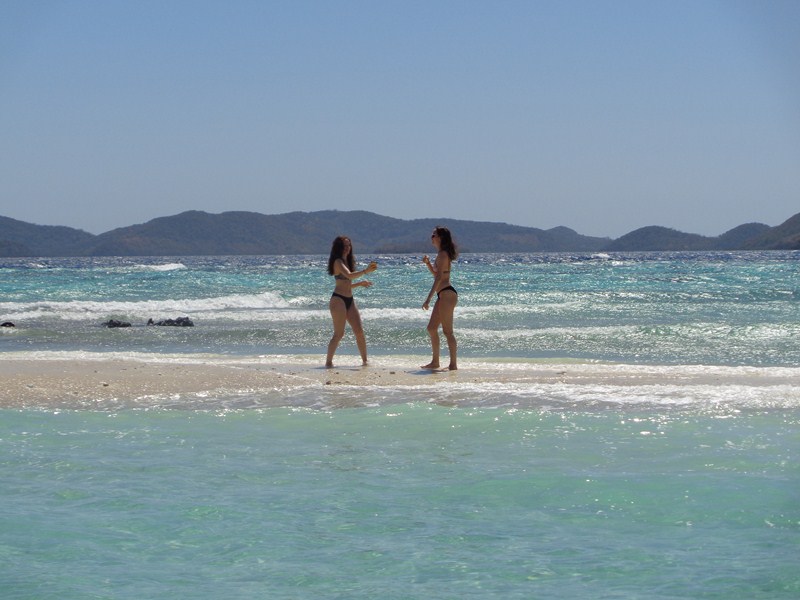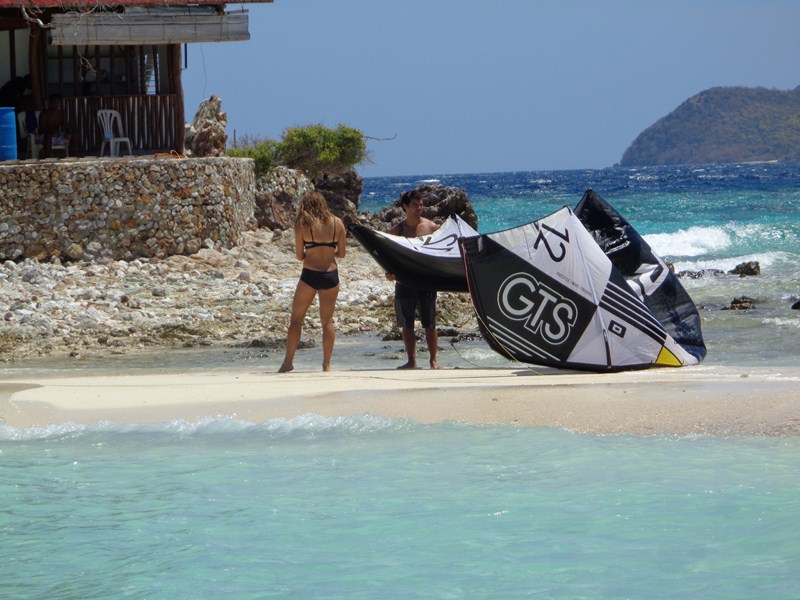The town’s first church and convent, built with wood, was started in 1771 by Fr. Domingo de San Joaquin and finished in 1776. By 1865, after renovations, it measured 57.4 m. in length and 16.5 m. in width. In 1952, the church underwent repairs of World War II damage.
AUTHOR’S NOTES
The church’s single level, Baroque facade, topped by a plain triangular pediment, has a semicircular arched main entrance flanked by massive square pilasters topped by urn-like finials, and semicircular arched windows.
Above the entrance is a small niche with the statue of St. Isidore the Farmer flanked by semicircular arched windows. The square bell tower, on the church’s left, is probably a modern addition.
Church of St. Isidore the Farmer: Lingayen-Labrador Road, Poblacion, Labrador 2402. Tel: (075) 549-5055. Feast of St. Isidore the Farmer: May 15.
How to Get There: Labrador is located 359 kms. from Manila. Within the province, it is located 12.6 kms. from Lingayen, 10.5 kms. from Bugallon and 7.3 kms. from Sual.


